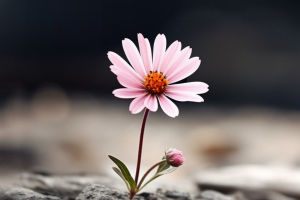Tulips (Tulipa) are beautiful and historically significant flowers that belong to the Liliaceae family and the Tulipa genus.
The name "tulip" is derived from the Turkish word "tülbent," meaning "turban," as the shape of the tulip flower resembles the headscarves commonly worn in the Middle East.
Tulips, with their rich colors and elegant shapes, have become treasured by horticulturists and flower enthusiasts around the world.
1. Origins and Distribution
Tulips are originally native to the Middle East, including Türkiye and Central Asia. They typically grow in dry, well-drained soils.
In the 16th century, tulips were introduced to Europe and quickly became popular flowers, a phenomenon known as "Tulip Mania," which had a profound impact on the Dutch economy in the early 17th century.
2. Morphological Characteristics
Tulip flowers are uniquely shaped, typically bell-shaped or cup-shaped, with six symmetrical petals.
The colors of tulip flowers are diverse, ranging from white, pink, and red to orange, yellow, and purple, covering nearly all visible colors. Some varieties also feature stripes or spots. Tulip leaves are long and narrow, deep green in color, sometimes with silver-white markings.
Tulips have a seasonal growth cycle, with bulbs planted in the fall and flowering the following spring. Their blooming period is relatively short, lasting about 2 to 4 weeks, with the flowers being most vibrant in early spring.
3. Propagation and Planting
Tulips are primarily propagated through bulbs. Planting bulbs in the fall is the most common method. Healthy, intact bulbs should be selected and planted at a depth approximately twice the height of the bulb. Maintaining proper spacing between bulbs ensures that the flowers can fully open.
After the blooming period ends, the flowers will wither, but the leaves should continue to grow until they are naturally yellow. This helps to store nutrients in the bulb for the next year's growth. The bulbs can then be harvested and stored during summer for propagation.
4. Cultural and Symbolic Significance
Tulips are cherished not only for their beauty but also for their unique symbolic meanings in different cultures.
In Türkiye, tulips are regarded as a national symbol and are commonly seen in traditional art and decorations. In the Netherlands, tulips symbolize the arrival of spring and are an important part of the Dutch floral industry, with the annual Tulip Festival attracting many tourists each spring.
Additionally, tulips symbolize love, perfection, and nobility. During the Victorian era, tulips were imbued with deep emotional and romantic significance and often used as a medium for expressing feelings.
5. Medicinal Value and Research
Although tulips are primarily ornamental, some studies have suggested they have certain medicinal values.
For instance, extracts from tulips have been studied for their antioxidant and anti-inflammatory properties. Traditionally, bulbs of some tulip varieties were used in folk remedies, but it is important to note that certain tulip bulbs contain toxins, and ingestion may cause health issues.
Conclusion
Tulips, with their vibrant colors, elegant forms, and rich cultural background, have become globally beloved flowers. Whether as garden plants or cultural symbols, tulips display their unique charm and diverse values. By understanding this information, you can better appreciate and care for this beautiful gift of nature.


